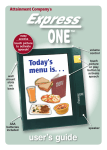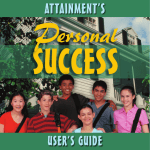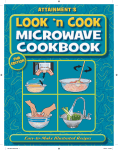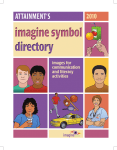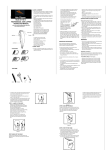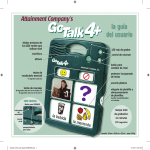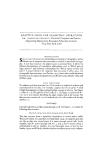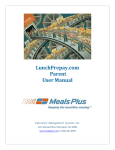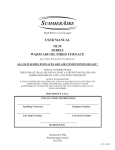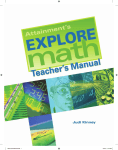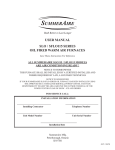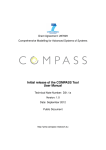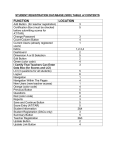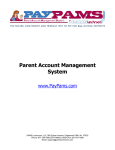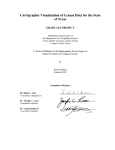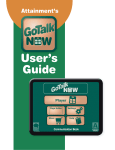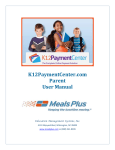Download Life Skill Readers - Samples Pages
Transcript
Win/Mac CD This CD contains a printable PDF of the entire book. You can review and print pages from your computer. The PDF (portable document format) file requires Acrobat Reader software. If you have Acrobat Reader already on your computer, run the program and then open the file using LSRGuide.pdf from the CD. To Install Acrobat Reader for Windows: Run ARINSTALL.EXE provided on the CD. After installation, run Acrobat Reader; then open using LSRGuide.pdf To install Acrobat Reader for Mac: Run Reader Installer. After installation, open using LSRGuide.pdf By Craig Booth and Judi Kinney Edited by Tom Kinney Graphic Design by Lynn Chrisman Photography by Craig Booth and Beverly Potts Cover Art by Joey Reynolds ISBN: 1-57861-549-6 An Attainment Publication ©2005 Attainment Company, Inc. All Rights Reserved. Printed in the United States of America. Attainment Company, Inc. P.O. Box 930160 Verona, Wisconsin 53593-0160 1-800-327-4269 www.AttainmentCompany.com Life Skill Readers Introduction Life Skill Readers presents six color-coded, easy-to-read chapters, all of which are augmented with extensive use of photographs. Chapters include: Community, Personal, School, Signs, Transportation and Work. The book can be given directly to users to read, or you can print out the assigned pages from the PDF of the book which is on CD-ROM. A third option is to photocopy assigned pages of the book, which for this purpose is in a covered spiralbound format. Forty topic areas run across the six chapters. Each area consists of a photographically illustrated story followed by study questions. All stories are either three, five or seven pages long. Throughout the book this presentation is standardized, with two blocks of vocabulary-controlled text per page and corresponding pictures above the text. All photographs are contemporary and realistic. Text blocks correspond to multiple photos which are there to reinforce the meaning of the text. The forty study questions pages follow a standard format. Who is Life Skill Readers For? The primary audiences for Life Skill Readers are adolescents and adults who read at a second grade level or below. Younger readers will also find most stories “age appropriate.” Three approaches for students to use Life Skill Readers are listed below: 1. Student reads independently. Students independently read the stories and answer the study questions. 2. Student reads with assistance. Students read the stories with the encouragement and oversight of a tutor or instructor. When completing study questions, instructors can give hints to struggling students. 3. Tutor reads story to student. The student listens to the story being read by the instructor. The instructor encourages participation by repeatedly pointing to and discussing picture content. Study questions are read to the student who can answer verbally or with accommodations. Additional Instructional Activities In addition to the merging of life skill instruction with reading comprehension, there are several additional instructional activities you can incorporate: 1. Find examples of functional sight words in the text and compile corresponding vocabulary lists for each student. If you have time, you can also make individual sight word cards for independent study for each student. ii Life Skill Readers • Introduction Life Skill Readers 2. Link community outings to relevant topics, like “Grocery Stores,” “Fast Food Restaurants” and “Visiting the Library” and discuss with students. 3. Give homework assignments by simply reproducing stories and lessons and sending them along with students at the end of the school day. Aligning to Standards and IEP Objectives Recent national trends toward setting high standards, which have emanated from No Child Left Behind and IDEA 2004, as well as local initiatives on the part of individual school districts have combined to energize literacy instruction for students with significant disabilities. In the process, there has been an increased emphasis on aligning instruction to standards through IEPs. Examples of appropriate standards could include: 1. Identifying themes from the text, 2. Responding to comprehension questions, 3. Retelling a story in sequence, and 4. Writing about reading materials. Writing to Student IEPs The areas of literacy and life skills are often addressed in student IEPs. Life Skill Readers makes a point of covering numerous daily living activities as well as community and vocational skill areas for transition students. Instructors will find that using the study questions to write measurable goals and objectives to student IEPs is very handy. Sample IEP objectives and benchmarks are included below: Life Skill Objectives 1. Student will read and answer questions to a story. a. Will predict content based upon title, pictures or captions. b. Will read the story. c. Will locate information and answer the questions. 2. With prompts will read the story and answer questions. a. With prompts will predict content based upon title, pictures or captions. b. With prompts will read the story. c. With prompts will locate information and answer the questions. 3. Will listen to the story and answer the questions read. a. With prompts will predict content based upon title, pictures or captions. b. Will listen to the story. c. Will listen to and answer questions read. Life Skill Readers • Introduction iii Community Barbershops..................................2 Doors...............................................8 Fast Food Restaurants...............14 Fire Departments.......................20 Grocery Stores.............................26 iv Life Skill Readers • Contents • Community Community Hardware Stores.........................34 Hotels...........................................40 Laundromats...............................46 Libraries.......................................52 Restaurants.................................58 Life Skill Readers • Contents • Community v Community Sit Down Restaurants................64 Stairs, Escalators, and Elevators......................................70 Stores...........................................76 Trip to the Farm...........................82 Trip to the Zoo..............................88 vi Life Skill Readers • Contents • Community Personal Expressions................................94 Going Out on a Date....................98 Indoor Chores— Washing Dishes........................102 Outdoor Chores— Lawn Care................................108 Preparing a Meal......................112 Life Skill Readers • Contents • Personal vii Personal Renting a Movie........................118 Taking Care of Pets...................122 Recycling and Garbage...........126 Visit to the Dentist’s Office.........................132 Visit to the Doctor’s Office..........................138 viii Life Skill Readers • Contents • Personal School Getting Ready for School........................................144 Riding the School Bus................................148 Starting School in the Morning......................................154 The IMC.......................................158 The Lunchroom.........................162 Life Skill Readers • Contents • Community ix Signs City Signs..................................166 Community Signs....................172 Safety Signs..............................176 x Life Skill Readers • Contents • Signs Transportation Riding in a Car...........................180 Getting Around Town................186 Traveling Long Distance..........192 Life Skill Readers • Contents • Transportation xi Work Product Engineer......................196 Graphic Artist............................200 Working in a Warehouse..........204 Working in an Office.................210 xii Life Skill Readers • Contents • Work Barbershops 1 People go to barbershops to get their hair cut or styled. The person who cuts your hair is called a barber. 2 Life Skill Readers • Community • Barbershops Barbershops 2 When you get your hair cut you sit in a special chair that turns and moves up and down. Some barbershops have sinks for washing hair. Life Skill Readers • Community • Barbershops 3 Barbershops 3 The barber wraps a sheet around your shoulders so hair does not fall on your clothes. Barbers use a comb and scissors to cut hair. 4 Life Skill Readers • Community • Barbershops Barbershops 4 Sometimes they use an electric hair clipper. After the haircut, the barber brushes loose hair from your face and neck. Life Skill Readers • Community • Barbershops 5 Barbershops 5 The barber tells you how much to pay for the haircut. You look good after you get your hair cut. 6 Life Skill Readers • Community • Barbershops Study Questions Barbershops 6 Name ________________________________________________________________________________ Date __________________________________ Directions: Circle the answer. 1. People go to the barbershop to get: a. laundry washed. b. hair cut and styled. c. drinks and food. 2. Barbers use: a. books, magazines and CDs. b. drinks, food and desserts. c. combs, scissors and electric clippers. Directions: Write the word to complete the sentence. 3. A person who cuts hair is called a ___________________________________________________________________. (barber) Challenge: Answer. 4. How often do you go to a barber? 5. Name something you can buy at the barbershop. Life Skill Readers • Community • Barbershops 7 Doors 1 Many large buildings have automatic doors that open before you touch them. Some doors open when you pull them sideways. Do not play around automatic doors because you could get injured. 8 Life Skill Readers • Community • Doors Doors 2 Some doors have buttons that people in wheelchairs can push to open automatically. When you open a glass door use the handle to push it open. Life Skill Readers • Community • Doors 9 Doors 3 It is important to know how to get out of buildings if there is a fire. Look for a door with a sign that says EXIT and go outside. Most EXIT signs are bright red so you can see them easily. 10 Life Skill Readers • Community • Doors Doors 4 Some doors are used only when there is an emergency. If you open these doors you will hear an alarm. Many buildings have revolving doors. Life Skill Readers • Community • Doors 11 Doors 5 To use a revolving door, push on the door handle and keep walking until you get through. It is important to know how to use different kinds of doors. 12 Life Skill Readers • Community • Doors Study Questions Doors 6 Name ________________________________________________________________________________ Date __________________________________ Directions: Circle the answer. 1. Doors that open before you touch them are: a. revolving doors. b. manual doors. c. automatic doors. 2. Doors that have alarms on them are: a. automatic doors. b. emergency doors. c. revolving doors. Directions: Write the word to complete the sentence. 3. To go out of a building, look for a sign that says _____________________________________ . (EXIT) Challenge: Answer. 4. What is a safety tip about automatic doors? 5. What kind of door does your school have? Life Skill Readers • Community • Doors 13

























